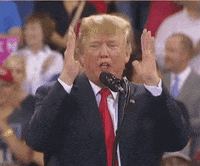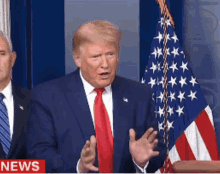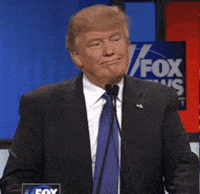
When Donald Trump takes the stage at a campaign rally, his words are only part of the performance. His hands are in constant motion, slicing through the air, jabbing at the crowd, or curling inward toward his chest. These gestures, often dismissed as mere theatrics, may be far more deliberate—and powerful—than they appear.
A new study by Christopher Hart, a linguist at Lancaster University, delves into the science of Trump’s hand movements, revealing how the former president uses pointing gestures to entertain, engage, and align himself with his audience. The research uncovers the hidden mechanics of political communication, showing how gestures can amplify a populist message.
The Language of Hands

Gestures are a universal part of human communication, but their role in politics has been understudied. Hart’s research focuses on one specific type of gesture: pointing. While pointing might seem simple, it’s a complex tool that can direct attention, convey emotion, and even shape how we perceive reality.
“One thing that has been observed is that populist politicians make greater use of the body as a communicative resource than non-populist politicians,” Hart told PsyPost. “And this is particularly the case for Donald Trump.”
Hart analyzed a 2016 Trump campaign rally in Buffalo, New York, where Trump addressed a crowd of over 11,000 people. By breaking down Trump’s gestures frame by frame, Hart identified patterns in how Trump uses his hands to connect with his audience.
The study found that Trump’s pointing gestures fall into four main categories: outward, inward, upward, and downward. Each direction serves a distinct purpose.
- Outward points are directed at the audience or third parties, like protesters or journalists (“they,” “the media”). These gestures often accompany phrases like “look at this” or “they’re not gonna do what’s right for you.” Hart notes that these outward points create a sense of direct engagement, making audience members feel personally addressed.


- Inward points are directed at Trump himself, often coinciding with first-person pronouns like “I” or “me.” These gestures, Hart argues, help Trump contrast himself with other politicians, reinforcing his image as a self-made outsider who puts “the people” first.
“Self-pointing is functionally redundant, so it might not be expected to occur frequently,” Hart explained. “But Trump uses them to contrast himself with other politicians.”

- Upward points are less common but can be dramatic, such as when Trump gestures toward an imaginary wall to emphasize its height. These gestures often occur during pauses for applause, adding a performative flair to his speeches.

- Downward points are linked to locative expressions, like “here” or “Buffalo.” By pointing to the ground, Trump grounds his policies in the physical space of his audience, making abstract ideas feel immediate and tangible.

Hart also identified more complex gestures, like “looping” motions that encircle the audience, creating a sense of inclusivity. These looping gestures often accompany phrases like “we’re in it together,” reinforcing Trump’s populist message of unity.
By using his hands to direct attention, contrast himself with others, and ground his policies in the here and now, Trump creates a visceral bond with his audience. Trump’s gestures are far from random, Hart claims. This bond is a hallmark of populist rhetoric, which thrives on the illusion of direct, unmediated communication between a leader and “the people.”

Hart’s study builds on earlier research into the role of gestures in political communication. For example, studies of Barack Obama’s gestures have shown how politicians use hand movements to emphasize precision and authority. But Trump’s gestures are different. They are less about precision and more about performance, less about authority and more about alignment.

This distinction is key to understanding Trump’s appeal. His gestures are not just tools of persuasion; they are tools of identification. By pointing outward, he draws his audience into his narrative. By pointing inward, he positions himself as one of them. And by looping his hands, he creates a sense of collective identity.
But the research has its limits. It focuses on a single rally, so it’s unclear whether these patterns are unique to Trump or common among populist leaders. Hart plans to expand his work, examining other gestures—like the shrug—and comparing Trump’s style to that of European right-wing populists.

For now, Hart’s research raises important questions about the role of gestures in politics. Are Trump’s gestures unique to his brand of populism, or are they a feature of populist rhetoric more broadly? How do other politicians use gestures to connect with their audiences? And what role do cultural differences play in shaping gestural communication?
These questions are not just academic. In an era of viral videos and social media, gestures are more visible—and more influential—than ever. Understanding how they work can help us better navigate the complex landscape of modern politics.
The findings appeared in the journal Social Semiotics.


